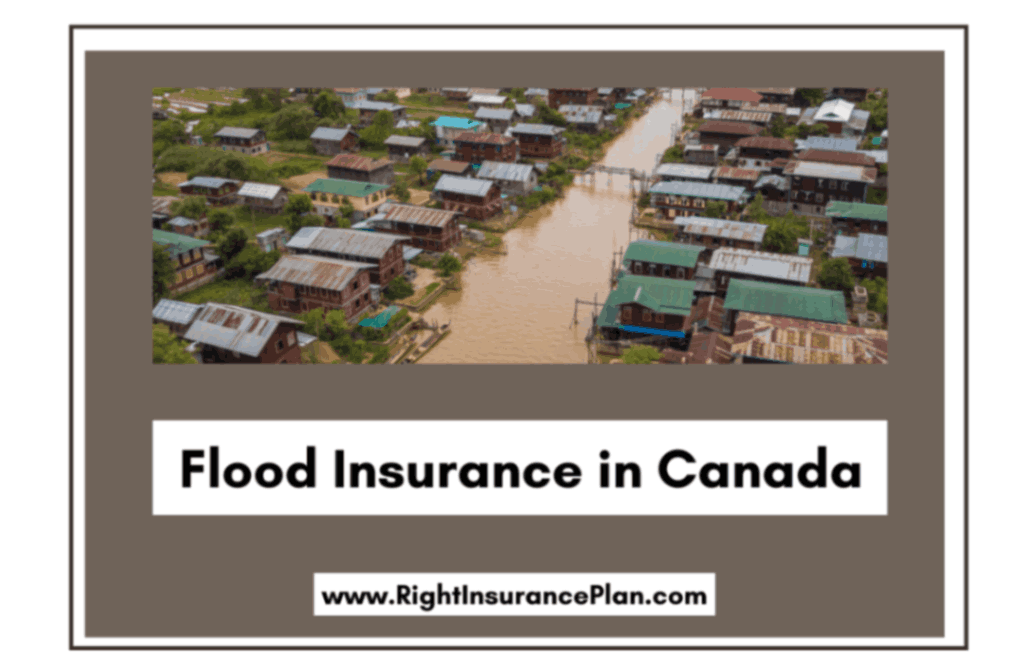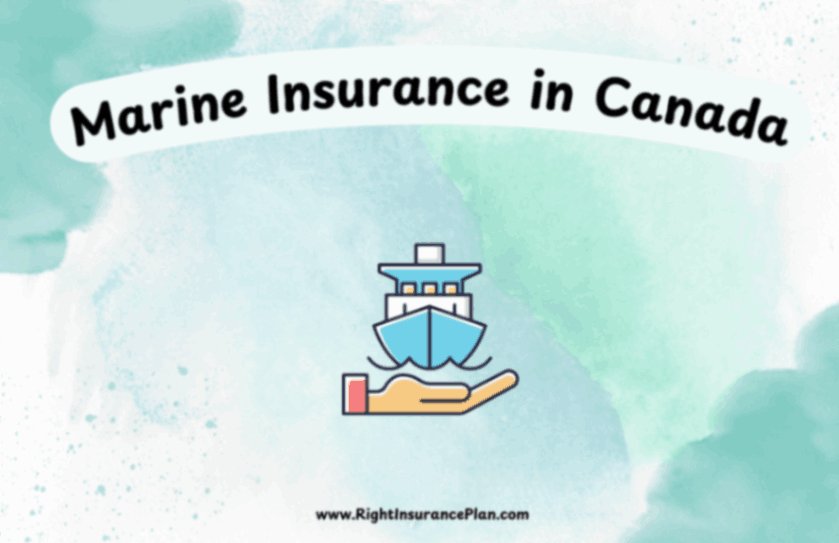
Flood Insurance in Canada
As climate change continues to impact weather patterns across the globe, Canada has seen a significant increase in flooding events in recent years. This trend has put a spotlight on the importance of flood insurance for Canadian homeowners and businesses. In this comprehensive guide, we'll explore the current state of flood insurance in Canada, recent developments, and what property owners need to know to protect their assets.
The Rising Tide of Flood Risk in Canada
Canada is no stranger to flooding. With its vast network of rivers, lakes, and coastal areas, the country has always faced some degree of flood risk. However, the frequency and severity of flooding events have increased dramatically in recent decades:
1. According to the Insurance Bureau of Canada (IBC), water-related damage has become the leading cause of property insurance claims in the country, surpassing fire and theft.
2. The average annual cost of flood damage in Canada is estimated to be between $1 billion and $3 billion.
3. Major flooding events, such as the 2013 Alberta floods and the 2017 Quebec floods, have caused billions of dollars in damage and displaced thousands of residents.
4. Climate projections suggest that flood risks will continue to increase across much of Canada in the coming years.
The Evolution of Flood Insurance in Canada
Historically, flood insurance coverage in Canada was limited. Most standard home insurance policies excluded overland flooding (water entering the home from ground level), leaving many homeowners vulnerable to significant financial losses. However, the insurance landscape has evolved considerably in recent years:
1. In 2015, some Canadian insurers began offering overland flood insurance as an add-on to existing home insurance policies.
2. By 2019, about 90% of Canadian homeowners had access to some form of flood insurance, although take-up rates varied widely across the country.
3. The federal government has been working with provinces, territories, and the insurance industry to improve flood insurance availability and affordability, particularly in high-risk areas.
Types of Flood Insurance Coverage
Canadian property owners now have access to several types of flood-related insurance coverage:
1. Overland Flood Insurance: Covers damage caused by water entering the home from ground level, such as river overflows or excessive rainfall.
2. Sewer Backup Coverage: Protects against damage caused by water backing up through sewer systems or sump pumps.
3. Water and Sewer Line Coverage: Covers damage to underground pipes connecting your home to municipal water and sewer systems.
4. Comprehensive Water Coverage: Some insurers offer bundled policies that combine various types of water-related coverage.
Factors Affecting Flood Insurance Availability and Cost
Several factors influence the availability and cost of flood insurance in Canada:
1. Location: Properties in high-risk flood zones may face higher premiums or limited coverage options.
2. Property Characteristics: The age, construction type, and elevation of a building can affect insurance rates.
3. Flood Protection Measures: Implementing flood mitigation strategies may lead to lower premiums.
4. Claims History: Previous flood-related claims can impact future insurance costs and availability.
5. Market Conditions: The overall state of the insurance market and reinsurance costs can influence pricing and coverage options.
Recent Developments in Canadian Flood Insurance
The flood insurance landscape in Canada continues to evolve.
1. Task Force on Flood Insurance and Relocation: In 2020, the federal government established this task force to examine options for low-cost flood insurance and potential relocation programs for high-risk areas.
2. National Flood Insurance Program: Discussions are ongoing about the potential creation of a national flood insurance program, similar to the one in the United States, to ensure more widespread and affordable coverage.
3. Improved Flood Mapping: Federal and provincial governments are investing in better flood mapping technologies to help insurers and property owners assess risk more accurately.
4. Climate Resilience Rating Program: The Standards Council of Canada is developing a program to rate the climate resilience of infrastructure and buildings, which could influence insurance rates.
5. Increased focus on Nature-based Solutions: There's growing recognition of the role that natural infrastructure (e.g., wetlands, forests) can play in flood mitigation, potentially impacting insurance considerations.
Challenges and Considerations
Despite progress, several challenges remain in the Canadian flood insurance market:
1. Affordability: In high-risk areas, flood insurance premiums can be prohibitively expensive for some property owners.
2. Coverage Gaps: Some Canadians, particularly those in the highest-risk areas, may still struggle to obtain adequate flood insurance.
3. Awareness: Many property owners remain unaware of their flood risks or the availability of flood insurance options.
4. Moral Hazard: There are concerns that widespread flood insurance availability could discourage proper land-use planning and flood mitigation efforts.
5. Climate Change Uncertainty: The rapidly changing nature of flood risks due to climate change presents challenges for insurers in accurately pricing policies.
Steps for Canadian Property Owners
If you're a property owner in Canada, here are some steps you can take to protect yourself from flood risks:
1. Assess Your Risk: Use available flood mapping tools and consult with local authorities to understand your property's flood risk.
2. Review Your Insurance: Check your current insurance policy to see what water-related damage is covered and what isn't.
3. Shop Around: Different insurers may offer varying coverage options and rates. Compare policies from multiple providers.
4. Consider Mitigation Measures: Implement flood protection strategies for your property, such as installing backflow valves, elevating valuable items, or improving drainage.
5. Stay Informed: Keep up-to-date with local flood warnings and evacuation procedures.
6. Document Your Property: Maintain an up-to-date inventory of your belongings and keep important documents in a safe, waterproof location.
The Future of Flood Insurance in Canada
As climate change continues to alter flood risks across Canada, the insurance industry and government policies will need to adapt. Some potential future developments include:
1. Risk-based Pricing: More sophisticated flood risk assessment tools may lead to more granular, property-specific insurance pricing.
2. Mandatory Flood Insurance: Some experts suggest that flood insurance could become mandatory for properties in certain high-risk areas.
3. Managed Retreat: In some cases, relocating communities from high-risk flood zones may become a more cost-effective solution than repeated rebuilding and insurance payouts.
4. Integration with Climate Adaptation Strategies: Flood insurance is likely to become more closely tied to broader climate adaptation and resilience efforts.
5. Innovative Insurance Products: New insurance products, such as parametric insurance policies that pay out based on predefined flood events rather than assessed damage, may become more common.
Conclusion
Flood insurance in Canada has come a long way in recent years, but challenges remain. As climate change continues to increase flood risks across the country, it's crucial for property owners to understand their risk, explore their insurance options, and take steps to protect their assets.
You can also check the information regarding Renters Insurance in Canada
FAQs:
1. Is flood insurance mandatory in Canada?
Flood insurance is not mandatory in Canada at the federal level. However, some mortgage lenders may require it for properties in high-risk flood zones.
2. Does your standard home insurance policy cover flood damage?
Most standard home insurance policies in Canada do not automatically include coverage for overland flooding. However, they typically cover water damage from burst pipes or sewer backups. It's important to check your specific policy or consult with your insurance provider.
3. What types of flooding are covered by flood insurance?
Flood insurance in Canada typically covers overland flooding (water entering your home from ground level), sewer backups, and in some cases, coastal flooding. The exact coverage can vary between insurers and policies.
4. How much does flood insurance cost in Canada?
The cost of flood insurance varies widely depending on factors such as your property's location, flood risk, the value of your home, and the coverage limits. In low-risk areas, it might add only a small amount to your premium, while in high-risk zones, it could be significantly more expensive.
5. Does flood insurance cover basement flooding?
Many flood insurance policies do cover basement flooding, but it's important to check the specifics of your policy. Some policies may have limitations or exclusions for certain types of basement damage.
6. How do you know if your area is at risk of flooding?
You can check flood risk maps provided by your provincial or municipal government. Some insurance companies also offer flood risk assessment tools.
7. Does flood insurance cover mold damage resulting from a flood?
Some policies may cover mold damage resulting directly from a covered flood event, but this can vary.
8. Can you purchase flood insurance at any time, or only when there's a flood warning?
You can typically purchase flood insurance at any time, but many policies won't cover damage from floods that occur immediately after the policy is purchased.
9. Is there a national flood insurance program in Canada?
Unlike the United States, Canada currently does not have a national flood insurance program. However, there have been discussions about potentially creating one in the future.
10. How do you make a claim on your flood insurance?
If your property is damaged by flooding, contact your insurance provider as soon as possible. Document the damage with photos and videos, keep receipts for any emergency repairs, and follow your insurer's specific claims process.



